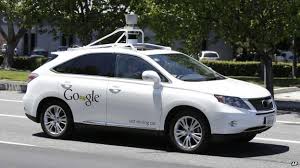Driverless Cars: A Preview
It was eerie. I was driving along the freeway between San Francisco and San Jose, comfortably guided under cruise control, when I noticed a car smoothly glide by on my left. Its occupants were engaged in conversation. They were not looking at me. They were not focused on the road, particularly. The man in the front lefthand seat was not holding the wheel. I’m not even sure there was a wheel. Suddenly, I realized no one was driving the car.

I felt the need to reassert myself in the driver’s seat of my own vehicle. I turned off the cruise control, tapped my foot on the brake and accelerator. I touched the turn signal. I gripped the wheel. I stared ahead, glancing now and then in the rearview mirrors.
A driverless car? It feels futuristic. But as it turns out, the future is here.
I had just been passed by the Google car.
The real question everyone is asking is: will they be safe? Will they be safer than cars are today? In more than six years of experimenting and nearly one million miles of road testing, the Google car has only been in 11 minor accidents. Google spokesman Chris Urmson hastens to add that “Not once was the self-driving car the cause of the accident.” You can read more about the research and development of driverless cars here.
Accidents do happen. The safety question must be viewed against present statistics. In 2012, NHTSA reported 5.3 million vehicle collisions, in which 2.2 million people suffered injuries. And, more than 32,000 deaths in addition to those injuries. Earlier studies by NHTSA show that the human factor is a significant cause of those crashes. Strong state lemon laws and consumer advocates have helped make cars safer over the last few decades — but a safe car also needs a safe driver. A 2008 NHTSA study of more than 5,000 collisions found that the human element was a significant contributing factor to vehicle crashes. The human frailty factor included things like distracted driving, poor judgment, illegal turns and lane changes, aggressive driving, failure to brake in time, inattention and simple loss of control. Not to mention the problem of DUI. Broken down like this, it is conceivable that robotic components and technology might yet be better than people are at the controls.
Some of the technology that will power driverless vehicles already exists in the cars we drive today. Forward collision avoidance, blind spot alerts, lane assist technology, and other advanced warning devices, are already installed on some makes and models on the roads today. Manufacturers are still working out glitches in some of these components. And of course, there is that early form of driverless technology, the ubiquitous cruise control function I was using when I was passed by the Google car.
As driverless cars enter the marketplace, the law of accountability will have to catch up. But the purpose of the lemon law could never be more clear: to ensure safe and reliable transportation no matter who is in control.

